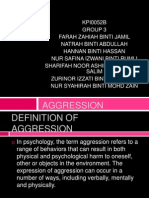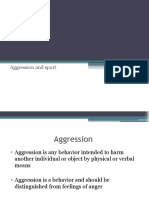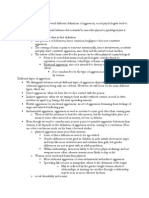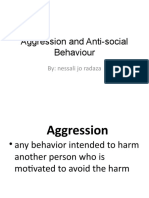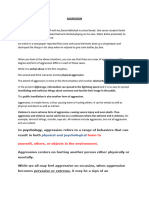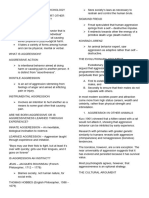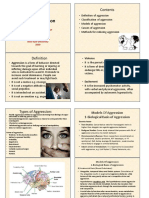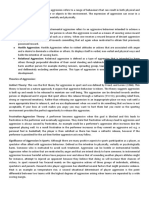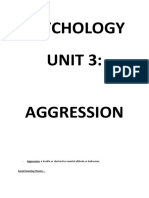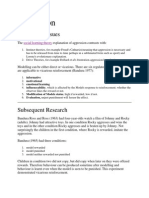0% found this document useful (0 votes)
28 views13 pagesAggression
The document discusses the concepts of negative and positive peace interventions, emphasizing the need for social and cultural transformations to reduce structural violence. It defines aggression, its forms, purposes, and the biological and environmental factors influencing it, while distinguishing between hostile and instrumental aggression. Theories related to aggression, including the Nature vs. Nurture debate, are explored, highlighting the roles of genetics, hormones, and learned behaviors in aggressive actions.
Uploaded by
hisegef161Copyright
© © All Rights Reserved
We take content rights seriously. If you suspect this is your content, claim it here.
Available Formats
Download as PDF, TXT or read online on Scribd
0% found this document useful (0 votes)
28 views13 pagesAggression
The document discusses the concepts of negative and positive peace interventions, emphasizing the need for social and cultural transformations to reduce structural violence. It defines aggression, its forms, purposes, and the biological and environmental factors influencing it, while distinguishing between hostile and instrumental aggression. Theories related to aggression, including the Nature vs. Nurture debate, are explored, highlighting the roles of genetics, hormones, and learned behaviors in aggressive actions.
Uploaded by
hisegef161Copyright
© © All Rights Reserved
We take content rights seriously. If you suspect this is your content, claim it here.
Available Formats
Download as PDF, TXT or read online on Scribd
/ 13

